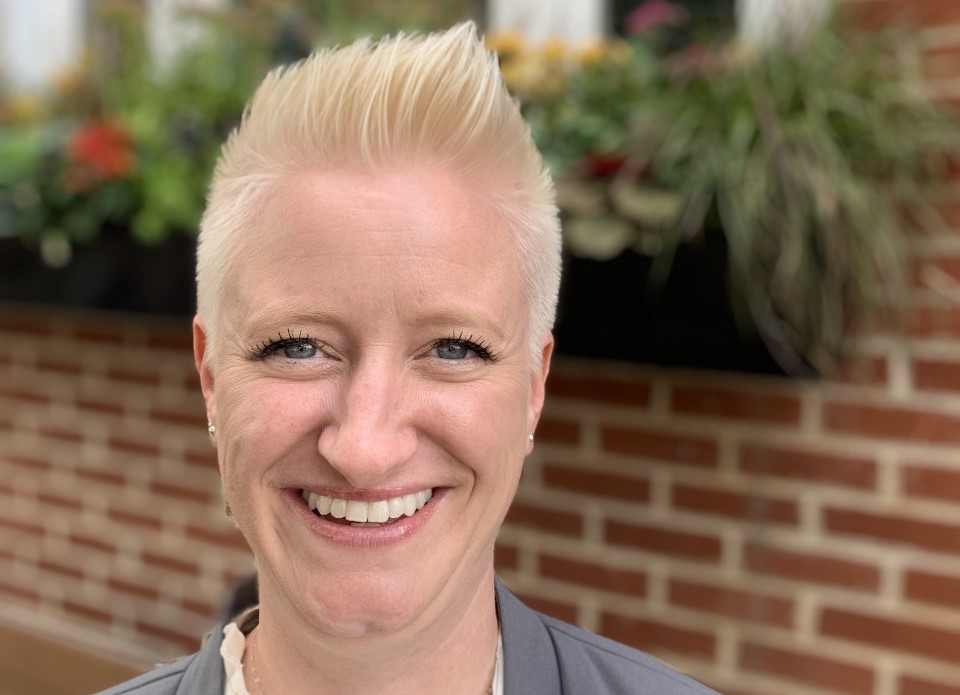 A warm welcome back to “Women in Circularity”, where we shine a light on women moving us toward a circular economy.
A warm welcome back to “Women in Circularity”, where we shine a light on women moving us toward a circular economy.
This month, I am pleased to be celebrating the third anniversary of my Women in Circularity column, which launched on March 2, 2021, in honor of International Women’s Day. I continue to be energized by writing this column and thrilled to share that other Women in Circularity efforts are in the works—stay tuned! This month, I was pleased to connect with a circularity innovator: Lisa Conway. Lisa is the VP of Global Market Sustainability at Interface, a global flooring manufacturer that makes it their mission to reverse global warming, create a climate fit for life and leave a positive impact. She has more than 20 years of experience in the flooring industry.
What are some of your most significant career milestones?
I have been with Interface for 17 years, with 8 of those years in sustainability roles. An early career milestone was when I read our founder Ray Anderson’s book in 2007, Confessions of a Radical Industrialist. I had just joined Interface and figured I should read it, and it changed everything for me. Almost overnight, I became an environmental activist—both inside of Interface and out. I joke, but it’s also the truth.
My passion and vocal stance on the steps we need to take to reverse global warming resulted in the opportunity to lead our Market Sustainability team full-time. This was a major milestone for me, and I felt honored that our leadership thought of me for the role. The Market Sustainability team at Interface is tasked with learning and sharing every day with those in our industry and beyond.
A big part of these conversations is the circular economy. We are constantly looking at how to drive circularity on a global and local scale and educating architecture and design professionals that it must be a team sport to be successful. I’m really competitive, but the way to compete in the circular economy is to compete at being collaborative. And the way to ‘win’ is through shared goals and partnerships.
How does your work help Interface meet its vision for a regenerative world?
Something I hear a lot from peers and co-workers is that I bring fun and optimism to a pretty daunting set of topics, including, but not limited to, the circular economy. I collaborate with a whole team of smart folks on developing strategies and getting plans on paper, but people bring the strategy to life.
I love finding people’s genius and helping them understand how they can be a part of something much bigger than themselves. It’s especially rewarding to pull in colleagues who don’t normally ‘touch’ sustainability—it expands their minds, and it expands ours because they see things differently, and we can find new ways to achieve milestones on a long journey ahead. We need everyone to meet our vision, and I think my superpower is bringing people together to solve big challenges and making it fun. The fun is what makes us want to do more, together.
Is there a recent initiative you have worked on that you found particularly meaningful and why?
There is. We launched the first-ever carbon negative carpet tile (when measured cradle-to-gate) in 2020. As we prepared for the launch, we were thinking of ways to tell the story of what a big deal this innovation truly is. We’ve made products that actually store more carbon than they emit, and in thinking about this achievement, a realization hit me: burning fossil fuels puts waste carbon in the atmosphere, and then we’re utilizing carbon from the atmosphere that’s stored in plants (via photosynthesis) to make our products—it’s the circular economy of atmospheric carbon. It has been such a cool way for people to wrap their heads around how vast circular economy solutions are.
In your opinion, what is the next major linear economy disruptor?
I think it’s getting our societal and financial systems to reward the concept of growth in new ways. That could happen a while from now, or it could happen tomorrow because some video goes viral that changes the way we think entirely. I hope it’s the latter!
What is a favorite piece of advice you received from a mentor?
That would be, “do the work so people have something to react to.” Far too often, we are part of a great conversation where there is amazing energy, and everyone has rallied around an idea, and nothing happens. After these types of conversations, I like to take the first step—put a framework down with a bunch of ideas for executing the idea. Even if all the ideas are terrible, you took the first step, and now it’s moving. It’s always easier for people to edit than to create something from scratch.
MaryEllen Etienne is the creator of “Women in Circularity.” Etienne works on the Market Transformation and Development team for the U.S. Green Building Council. She has over 20 years of experience in sustainability and is a champion of the circular economy.

